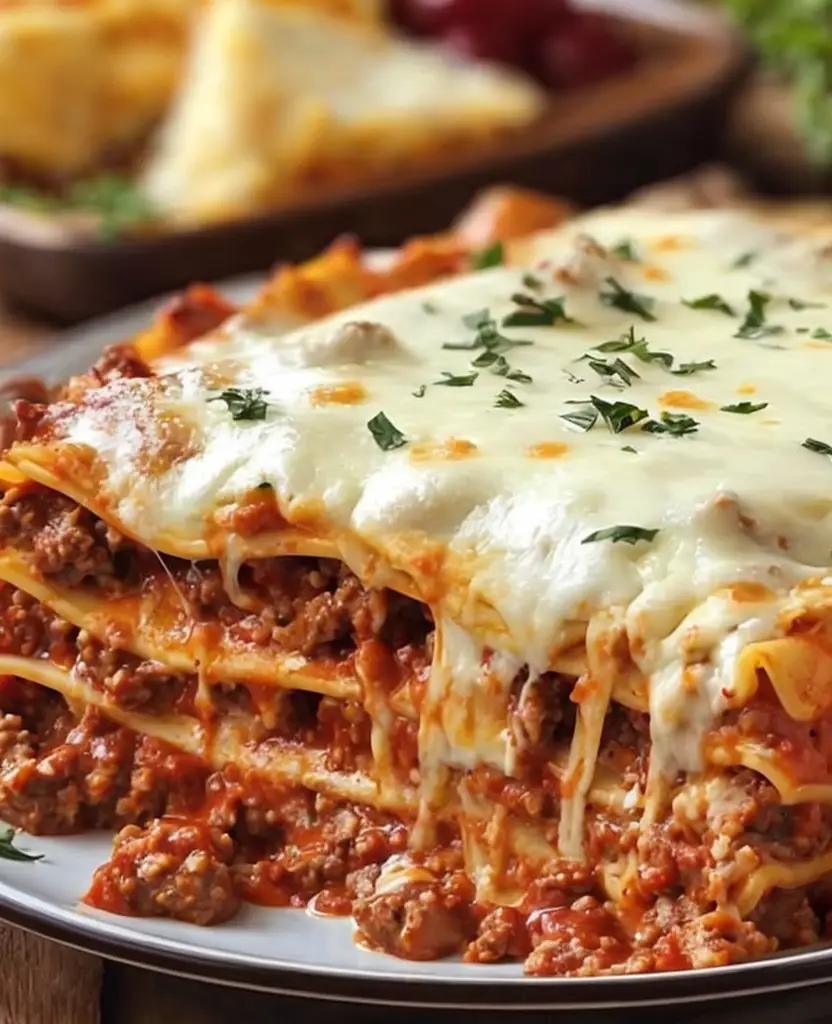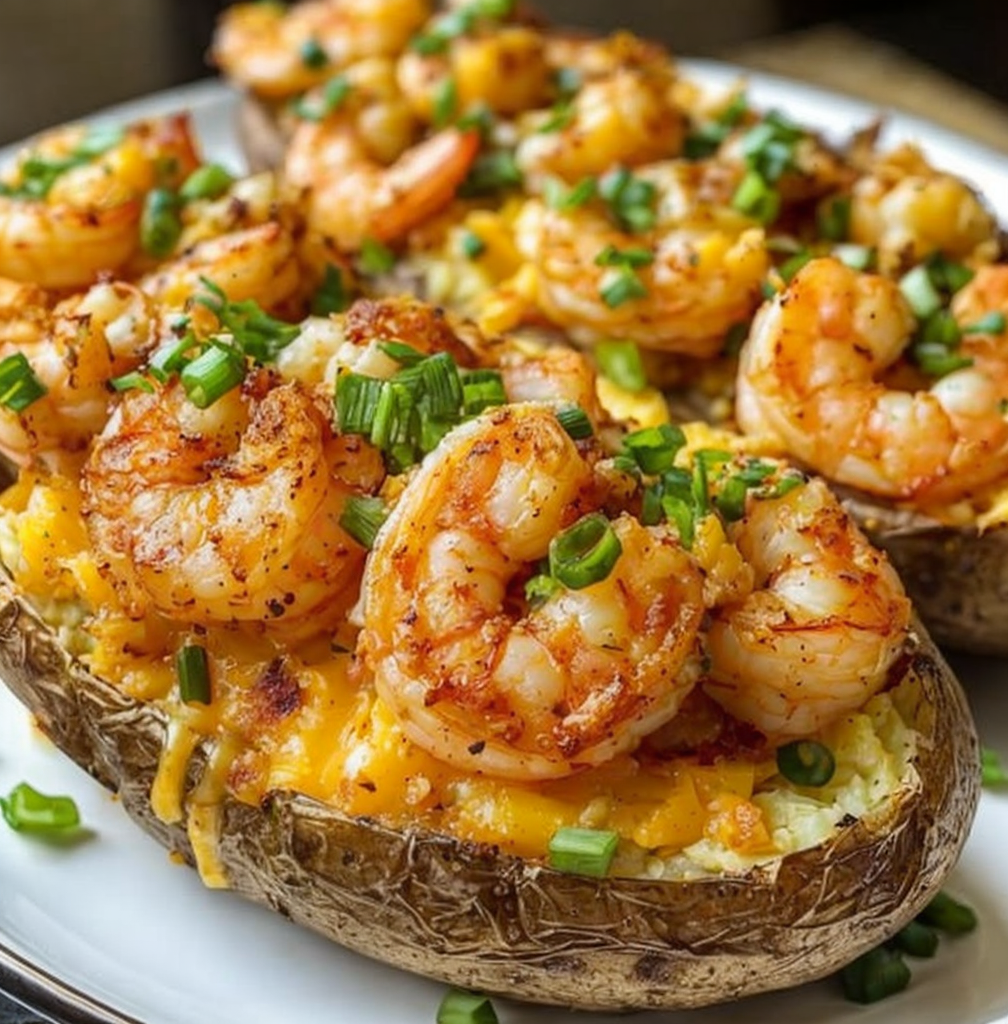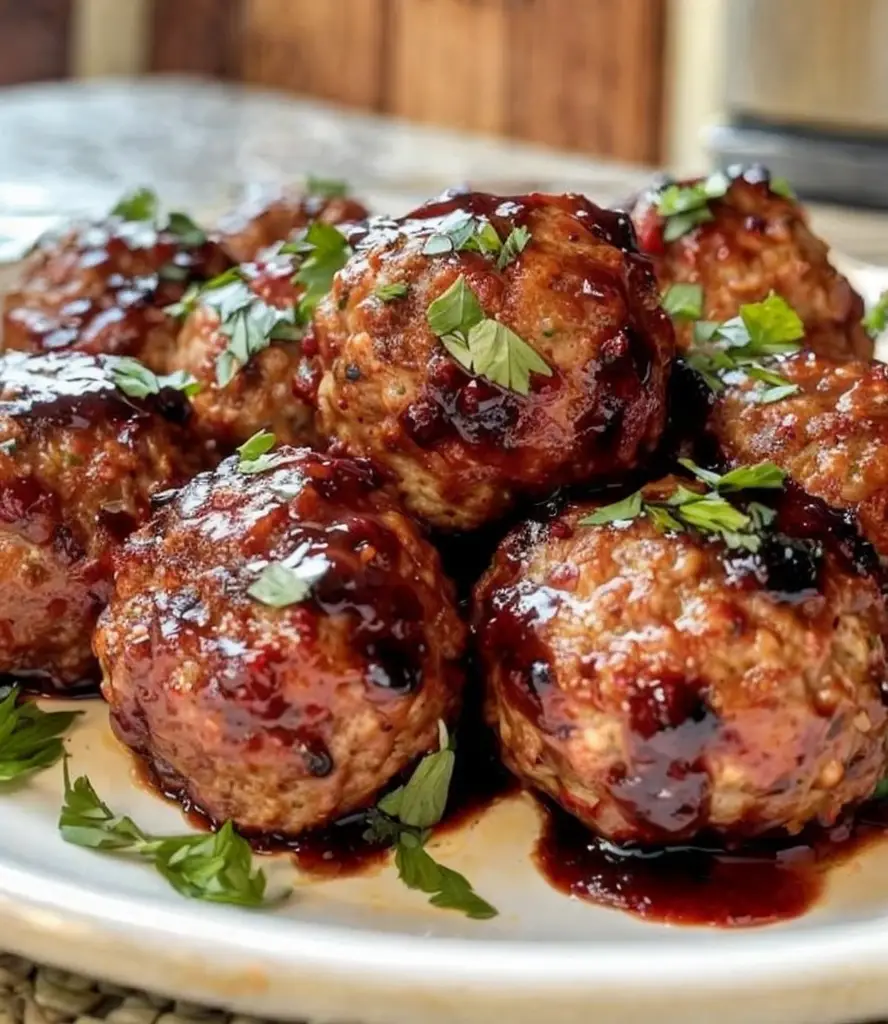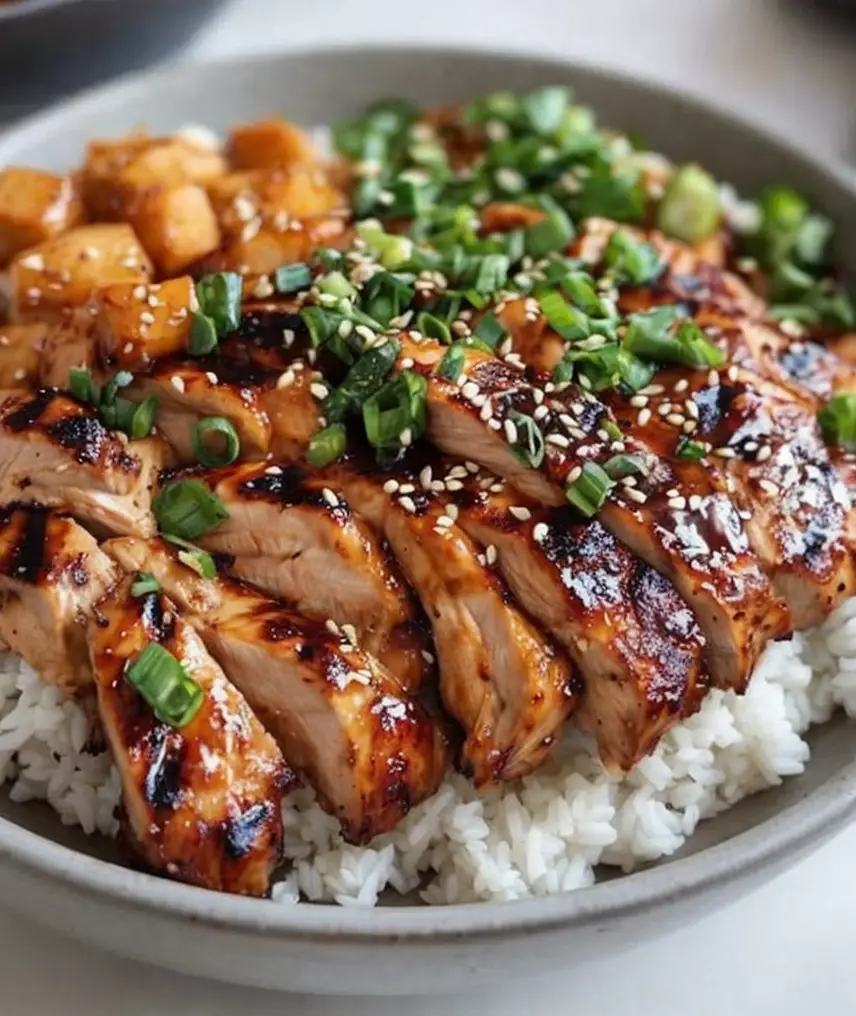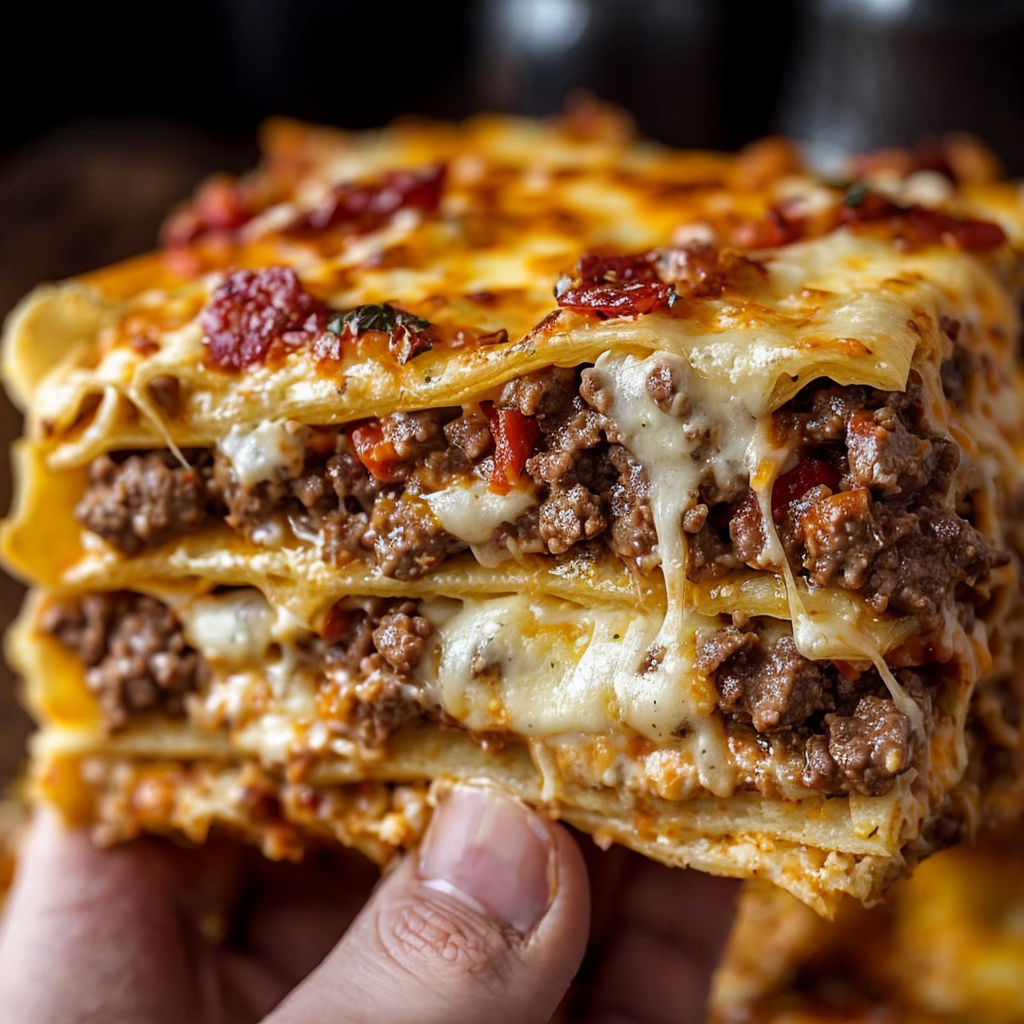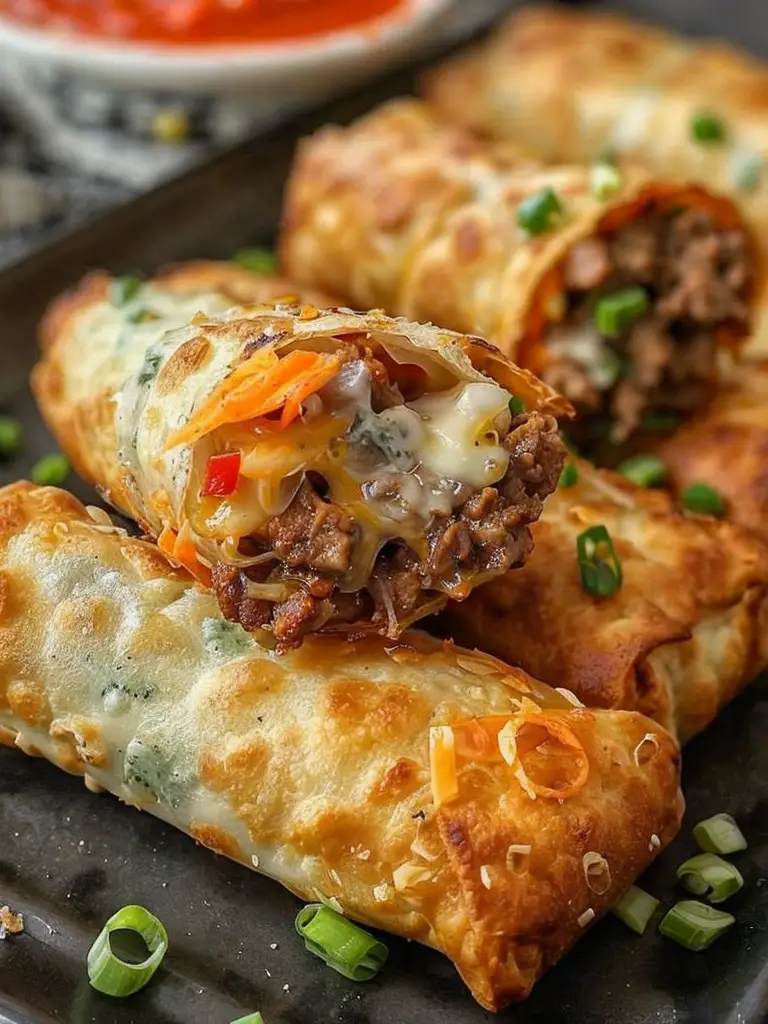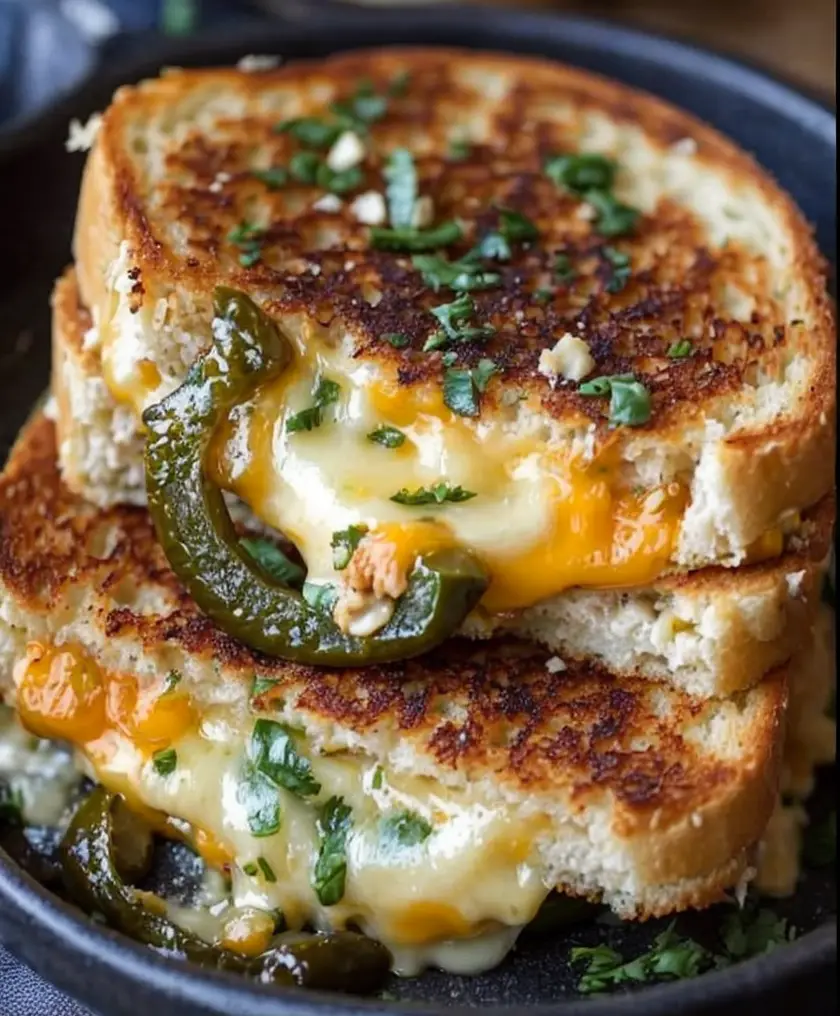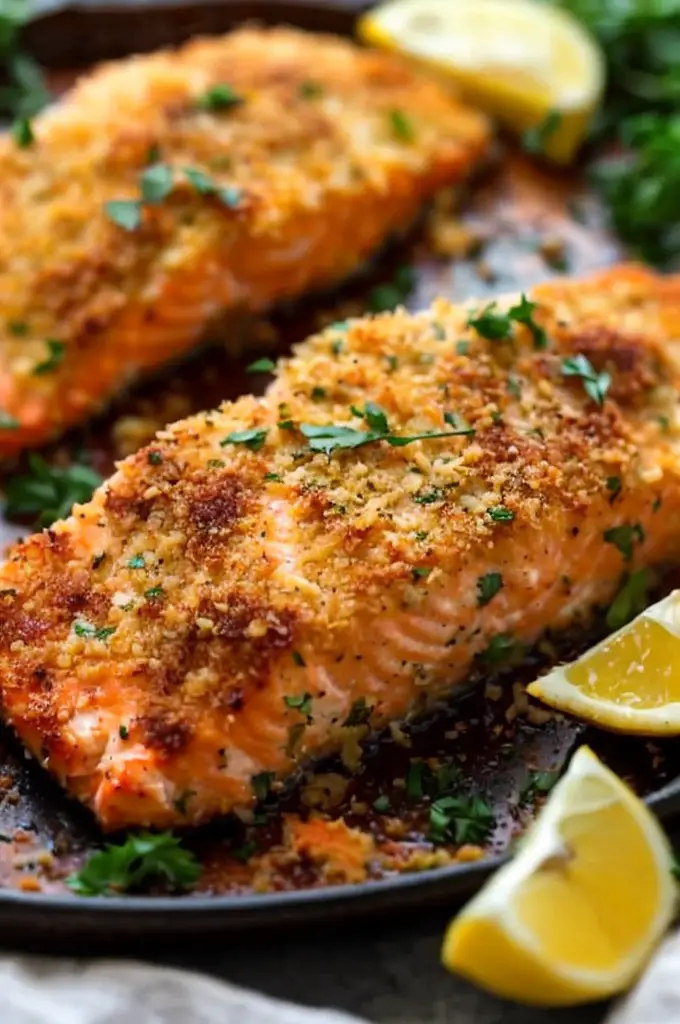Ribeye Steak with Onions and Fries: A Gourmet Delight for Meat Lovers
Imagine sinking your teeth into a perfectly cooked ribeye steak, oozing with robust flavors and juicy succulence. Pair that with sweet caramelized onions and crispy homemade fries, and you have a meal that’s nothing short of spectacular. This Ribeye Steak with Onions and Fries recipe is an ode to meat lovers who appreciate a well-rounded and hearty dish. Whether it’s a special occasion or a weekend treat, this plate promises to hit all the right notes, making your dining experience unforgettable.
Ribeye steak stands out for its rich marbling that melts into the meat as it cooks, ensuring a tender and flavorful bite every time. Complemented by lightly charred onions that lend a subtle sweetness, this dish offers a symphony of flavors and textures. The aromatic notes of herbs and spices come together beautifully, enhancing the steak’s natural taste, while the golden, crispy fries add a satisfying crunch to the meal, making every bite an adventure.
Quick Recipe Highlights
- Flavor Profile: A delightful mix of juicy and savory ribeye steak with a hint of sweetness from caramelized onions and a savory touch from the homemade fries.
- Texture: The ribeye offers a tender and succulent experience, while the onions are soft and sweet, and the fries bring a crispy, satisfying crunch.
- Aroma: The combination of roasting onions, searing steak, and herbed fries creates an irresistible aroma that fills the kitchen with warmth and anticipation.
- Visual Appeal: This dish presents a stunning contrast of colors with the rich brown of the steak, golden fries, and translucent caramelized onions, styled to perfection on your plate.
- Skill Level Needed: A moderate level of culinary skill is required to perfectly sear the steak and achieve the desired texture for the onions and fries.
- Special Equipment: A cast-iron skillet for the steak and onions, and a reliable fryer or oven to crisp up the fries to golden perfection.
Recipe Overview
- Difficulty Level: The recipe is considered medium in difficulty, requiring a good understanding of timing and texture balance to achieve the ideal doneness for the ribeye steak and the perfect crisp on the fries.
- Category: This recipe fits into the main course category, ideal for dinner or a special lunch occasion.
- Cuisine: Drawing from Western cuisine, this dish showcases classic steakhouse flavors with a modern homemade touch.
- Cost: While ribeye steak is slightly on the pricier side, the overall ingredients remain affordable, making it a cost-effective choice for gourmet homemade dining.
- Season: This recipe is perfect year-round but is particularly inviting during the colder months when hearty, warming dishes are most appreciated.
- Occasion: Ideal for celebratory meals, date nights, or weekend family dinners, providing a restaurant-quality experience right at home.
Why You’ll Love This Recipe
Taste and texture take center stage with this ribeye steak dish. The melt-in-your-mouth tenderness of the steak, balanced by the slight crisp of the fries and the sweet notes of caramelized onions, creates a multisensory delight. Each element enhances the other, resulting in a harmonious dish that appeals to a variety of palates.
Preparation is conveniently streamlined, with straightforward steps for each component of the meal. A well-rounded recipe, it promises ease without compromising on flavor, making it suitable for weeknight dinners or special weekend meals.
Nutritionally, this meal balances protein with complex carbs, enriched by the vitamins and minerals found in potatoes and onions. It’s a hearty yet nutritious choice that can be adapted to fit different dietary needs.
When it comes to entertaining, this dish is a showstopper, guaranteed to impress guests with its sophisticated presentation and mouthwatering flavors. Whether it’s a formal gathering or a casual get-together, this steak recipe is sure to be a crowd-pleaser.
Affordability and accessibility are at the heart of this recipe. While ribeye steak is a premium cut, purchasing in bulk or during sales can help manage costs. Furthermore, common pantry staples make up the bulk of the remaining ingredients, ensuring that you won’t have to break the bank to achieve culinary excellence at home.
Historical Background and Cultural Significance
The ribeye steak has a storied history, tracing back to ancient times when the art of grilling meats was born. Revered for its rich flavor and tender texture, ribeye has long been associated with celebratory meals and fine dining experiences.
Culturally, ribeye steak is often seen as a symbol of opulence and indulgence, enjoyed at steakhouses and gourmet restaurants globally. Its popularity reflects a deep-rooted appreciation for quality cuts of beef, and the skill involved in achieving a perfect cook.
Over the years, ribeye steak recipes have evolved, becoming more accessible to home cooks. Variations have emerged worldwide, from classic American to innovative European and Asian twists, underscoring the steak’s versatility and universal appeal.
Regional adaptations of the ribeye steak showcase local culinary traditions, from spice-laden rubs in the American South to herb-infused marinades in European cuisines, each adding its unique flair to the beloved dish.
Ingredient Deep Dive
Ribeye steak is celebrated for its exceptional marbling, which not only enhances flavor but also provides essential nutrients. Rich in protein and vital minerals like iron and zinc, ribeye is a powerhouse of nourishment. When selecting ribeye, look for cuts with a smooth, even pattern of marbling for the richest taste and texture.
The potatoes used for fries contribute vitamins C and B6, essential for immune function and metabolism, respectively. Choose firm, unblemished potatoes for the best results, and store them in a cool, dark place to maintain freshness. For a healthier variant, consider baking the fries, using olive oil, and adding a touch of smoked paprika for extra flavor.
Storage and preparation tips for onions include keeping them at room temperature, away from light, to preserve their flavor. Onions provide antioxidants and contribute to reducing inflammation, making them both a flavorful and health-beneficial addition to the dish.
Common Mistakes to Avoid
- Overcooking the steak can result in a tough texture. Always keep a close eye on cooking times and use a meat thermometer for accuracy.
- Improper seasoning of the steak limits the depth of flavor. Generously season with salt and pepper to enhance the natural taste of the ribeye.
- Leaving fries soggy can happen if they are too crowded in the fryer or not cooked at the right temperature. Ensure they have space and are fried until golden brown.
- Burning onions instead of caramelizing can occur if the heat is too high. Slow and steady wins the race with a moderate heat setting.
- Not resting the steak post-cooking can cause juices to escape when cut. Let it rest for at least 5 minutes to retain moisture.
- Using cold meat directly from the fridge can inhibit a proper sear. Allow the steak to reach room temperature before cooking.
- Crowding the pan when searing steak can cause steaming rather than searing, leading to a less desirable crust. Sear in batches if necessary.
- Inconsistent fry size can lead to uneven cooking. Aim for uniform thickness to achieve the perfect crisp outside and tender inside.
Essential Techniques
Mastering the perfect sear is crucial for an impeccable ribeye steak. This technique creates a flavorful crust that seals in the juices, enhancing the taste and texture of the meat. Start with a smoking hot skillet and ensure the steak is patted dry to prevent steaming, which can compromise the crust’s integrity.
Caramelizing onions requires patience and moderate heat. The natural sugars in onions gradually brown, creating a sweet and rich flavor profile that compliments the savoriness of the ribeye steak. Stir occasionally to prevent sticking and burning.
Achieving golden fries involves cooking at the right temperature and in the right medium—like a neutral oil with a high smoke point. For crisp and delicious results, consider double-frying: first at a lower temperature to cook through, then a higher temperature for a crispy exterior.
Pro Tips for Perfect Ribeye Steak with Onions and Fries
Always allow the ribeye steak to rest after cooking; this lets the juices redistribute, ensuring every bite is moist and flavorful. A simple seasoning of salt and cracked black pepper allows the natural flavors of the ribeye to shine.
For the fries, soak the cut potatoes in cold water before frying. This process removes excess starch, resulting in crispier fries. Season immediately after frying for better adherence of spices and salt.
Caramelizing onions adds a dimension of sweetness that balances the savory richness of the steak. Cook them slowly over medium heat for about 15-20 minutes for the best results.
Consider finishing the steak with a pat of herb butter or a drizzle of balsamic glaze for added richness and a hint of elegance.
To achieve a gourmet meal presentation, arrange the steak and fries elegantly, garnish with fresh herbs, and serve with a side of homemade dipping sauce for an added flavor burst.
Experiment with different potato varieties for the fries; Yukon Golds offer a unique flavor and creamy texture, while Russets are classic for their fluffy interior.
Variations and Adaptations
For a regional twist, try incorporating spices like smoked paprika or cumin into the steak rub for a Southwestern flavor. Alternatively, a dash of soy sauce and lime juice can lend an Asian flair to the marinade.
Seasonal adaptations could include serving the steak with a fresh summer salad instead of fries, offering a lighter, refreshing contrast.
To make the recipe vegan, consider using a plant-based steak alternative and roasting chickpeas for a hearty and protein-rich accompaniment in place of fries.
Flavor variations can include adding blue cheese crumbles to the finishing butter or experimenting with different herbs like rosemary or thyme for a more aromatic result.
Enhance texture by breadcrumbing and lightly frying steak strips for a crunchy exterior while keeping the juicy interior, offering a novel experience for steak enthusiasts.
Presentation alternatives could involve slicing the steak into strips before serving for easier consumption or arranging the meal deconstructed to highlight each component’s visual appeal.
Serving and Presentation Guide
For optimal plating, consider slicing the ribeye steak against the grain and fanning the slices around a central pile of fries, artistically dotted with caramelized onions for added color and dimension.
Garnish with a sprig of fresh rosemary or thyme and a sprinkle of flaky sea salt for an upscale touch. Serve the dish on a wooden board or warm ceramic plate to enhance the rustic, hearty presentation.
Accompany your steak and fries with a simple salad or roasted vegetables, providing balance and color to the plate. Consistency in portion size ensures guests receive equal servings and can aid in presentation symmetry.
Consider temperature guidelines; serving the steak medium rare to medium ensures optimal tenderness, while keeping the fries hot and fresh prior to serving maximizes their crispy texture.
Keep portion control in mind, particularly if serving as part of a multi-course meal. The richness of the ribeye means smaller servings can be more than satisfying.
Wine and Beverage Pairing
To complement a ribeye steak with onions and fries, consider a full-bodied red wine such as Cabernet Sauvignon or Malbec. Their tannin structure pairs well with the steak’s rich flavors, enhancing the dining experience.
For non-alcoholic options, a robust iced tea or a rich, unsweetened cherry soda can provide a refreshing counterbalance to the meal’s savory components.
Coffee pairings, such as a strong espresso, may enhance the meal’s completion with a sharp contrast to the dish’s flavors, providing a satisfying end to your culinary journey.
When serving wine, ensure it is at room temperature to allow its tannins and flavors to open up fully. Consider using decanters for bold red wines to aerate them beforehand.
Present beverages in appropriate glassware, such as wide-mouthed red wine glasses or highball glasses for mocktails, to elevate the dining experience.
Storage and Shelf Life
Once cooked, ribeye steak can be stored in an airtight container in the refrigerator for up to three days. For reheating, consider using a low oven to gently bring the steak back to temperature without overcooking.
Fries are best enjoyed fresh but can be stored and lightly re-crisped in an oven to regain some of their original texture. Ensure onions are stored separately to prevent them from becoming soggy.
Signs of spoilage include off odors or discoloration on the steak, and the fries becoming limp and unappetizing. Always aim to consume leftovers promptly to maximize flavor and safety.
Freezing cooked steak is possible but may slightly alter texture; if this route is chosen, wrap the steak tightly in foil and place it in a freezer bag for up to two months.
Properly storing onions involves using airtight containers to maintain their sweetness and prevent contamination with other foods in the fridge.
Make Ahead Strategies
The ribeye steak can be marinated several hours ahead, allowing flavors to infuse. Fries can be pre-cut and soaked to save time on the cooking day without compromising quality.
Store marinated steak in the fridge, and bring to room temperature before cooking for even heat distribution and optimal sear. Fries can be pre-cooked at a lower temperature, cooled, and flash-fried just before serving.
Quality impact is minimal with these strategies, ensuring the taste remains fresh and vibrant. Consider using a quality-based evaluation to decide on freshness and adherence to texture expectations.
Reheat without oil to prevent altering the flavor profile, and consider sprinkling fresh herbs or adding lemon juice for freshness at serving.
Add fresh garnishes like chives or parsley just before serving to elevate the dish visually and flavor-wise, keeping meals lively.
Scaling Instructions
For halving the recipe, reduce steak weight and fry portions proportionally, ensuring cooking methods are adjusted appropriately to maintain quality.
Doubling or tripling the recipe may require batch cooking, particularly with frying, to ensure consistency across portions and textures.
Consider equipment size adjustments, ensuring larger skillets or fryers are used for increased portions to prevent overcrowding and uneven cooking.
Timing modifications may be necessary as additional food volume can extend cooking times slightly, prioritize frequent checks for doneness.
When scaling, storage considerations include having enough room in fridge or pantry for ingredients and leftovers, and ensuring containers are on hand for extended food storage.
Nutritional Deep Dive
The ribeye steak delivers a substantial source of complete protein, supporting muscle repair and growth. It is high in iron, crucial for oxygen transport and energy metabolism.
Micronutrient content includes B vitamins and zinc, essential for immune function and cellular processes. Potatoes in the fries offer fiber and vitamin C, promoting digestive health and immunity.
Dietary considerations should include balancing steak fats with other lean proteins throughout the week, ensuring a healthy diet balance of macro- and micronutrients.
Portion analysis shows that an average serving provides satiation with adequate caloric value, making it a satisfying choice for varied diet plans.
Weight management can be influenced by serving sizes, utilizing fries as a treat given their caloric density or supplementing with additional vegetables for a filling meal.
Dietary Adaptations
For gluten-free adaptations, ensure seasonings and sauces are free from gluten additives, substituting fries with gluten-free starch options if needed.
Dairy-free modifications are effortless; substitute any butter in the recipe with dairy-free alternatives to accommodate lactose intolerance.
Vegan adaptations would involve seitan or tempeh as replacements for steak, pairing with seasoned sweet potato fries to maintain nutritional value with a plant-based focus.
Low-carb dieters can omit fries, opting for greens or roasted cauliflower to enjoy alongside the steak, retaining high fiber and low sugar content.
Keto followers should focus on the fat content of the steak, pairing with low-carb veggies or cauliflower mash, keeping within macro targets for compliance.
Paleo transformations would ensure all ingredients are whole foods-focused, maintaining the natural profile without processed inputs.
For a Low-FODMAP version, infuse rich flavors using garlic-infused oil and ensure all condiments respect FODMAP guidelines, accommodating sensitive stomachs.
Troubleshooting Guide
Texture discrepancies may stem from overcooked steak or under-crispy fries. Always prioritize thermometer readings and proper oil temperatures respectively.
Flavor imbalance can be addressed with proper seasoning techniques, using aligned salt and acid levels for simplified harmony through a balanced flavor profile.
Temperature issues often arise from uneven heating sources; the strategic use of thermometers and consistent frying will maintain desired temperatures effectively.
Equipment challenges include skillet choice for searing and fryer calibration, opting for professional-grade tools to ensure consistent outcomes.
Ingredient substitutions should respect flavor profiles, substituting like-for-like within culinary practices to preserve integrity.
Timing concerns map to properly sequencing activities, using effective prep lists to avoid unnecessary delays and manage multiple elements harmoniously.
Recipe Success Stories
Community feedback lauds the ribeye steak with onions and fries as a recipe with ‘restaurant quality at home,’ frequently leading with ease of preparation and impactful flavor.
Variation successes include reader suggestions of adding truffle salt to fries, introducing a gourmet touch praised for elevating familiar elements to new culinary heights.
Adaptation stories showcase readers creatively using leftovers in sandwiches, demonstrating the dish’s versatility beyond its initial presentation.
Reader suggestions expand on plating options, with innovative uses of bedded greens to bolster health while imparting vibrancy.
Photography tips admired include using natural light to enhance the dish’s colors and embrace editorial aesthetic techniques.
Frequently Asked Questions
Q: What is the best way to ensure my steak is tender?
A: For optimal tenderness, always let the steak rest for approximately 5 to 10 minutes post-cooking. This allows juices to reabsorb into the meat, minimizing dryness. Additionally, avoid overcooking and consider marinating the steak overnight to further tenderize.
Q: Can I use frozen fries instead of homemade?
A: Yes, frozen fries can be a convenient substitute. Follow package instructions for the best results, but consider a light seasoning post-cooking to enhance flavor and mimic the homemade experience.
Q: What steak alternatives work best if ribeye is unavailable?
A: If ribeye isn’t an option, sirloin or strip steak can be excellent substitutes. They offer similar texture profiles and flavor absorption properties, though cook times may slightly vary.
Q: How do I achieve even caramelization on the onions?
A: Patience is key. Use medium heat, stirring occasionally, and allow enough time for the natural sugars in the onions to develop. Avoid overcrowding the pan and ensure the onions are cut uniformly.
Q: What cuts can I make to decrease cost without sacrificing quality?
A: Consider buying steaks in bulk or during sales, preserving them through proper storage methods. Alternatively, choosing bone-in ribeye can sometimes provide savings while still offering robust flavor.
Q: Is there a substitute for red wine in the pairing?
A: For non-alcoholic options, consider a rich, unsweetened blackcurrant or cranberry juice, which offers complementary acidity levels to match the dish’s flavor profile.
Q: How should leftover steak be reheated without losing texture?
A: Reheat gently in a low-temperature oven or skillet with a drop of added steak juices to prevent drying. Avoid microwaves, which can toughen the texture under direct heat.
Q: Can the meat be pre-seasoned and stored?
A: Pre-seasoning and short-term refrigeration for up to a day can enhance flavor. Use airtight containers to maintain seasoning integrity and prevent moisture loss.
Q: Are there benefits to using sweet potatoes instead of regular for fries?
A: Sweet potatoes provide a nutritive boost, showcasing higher fiber and a natural sweetness, lending new dimensions to the meal. They are an excellent fit for those seeking alternative flavor profiles.
Q: How can I infuse different cultural flavors into this dish?
A: Use regional spice blends or sauces to marinate the steak, such as chimichurri for a South American touch or soy-ginger glaze for an Asian-inspired variant, complementing the core components suitably.
Additional Resources
Explore related recipes to expand your steak preparation skills with options like grilled steak salads or advanced steak techniques that promise a wide repertoire for at-home chefs.
Learn essential skills through our comprehensive technique guides, ensuring precision in every element from perfect searing to ideal caramelization processes, enhancing tactile skills.
Engage with ingredient information resources for broader understanding of flavor chemistry and substitutions, empowering kitchen creativity without limits.
Analyze equipment recommendations that align with modern cooking standards, ensuring reliable performance with every attempt for consistent culinary success.
Tune into seasonal variations with specialist articles offering seasonal ingredient guides, harmonizing fresh, local produce into your regular meal planning.
Join the Conversation
Connect with us on social media to share your recipe results, link up with a community of like-minded cooking enthusiasts, and gain inspiration from shared food photography.
Expand your culinary creativity with user-generated recipe reviews and tips, adding context and variety to your dining experiences.
Dive into community engagement by exploring developments of what others have created from this base recipe, exploring a range of cultural adaptations.
Share your recipe variations—how did you make this dish your own? Whether it’s a spice spin or a presentation twist, add your voice to the conversation.
Join discussions on perfecting technique, from photographing your culinary delights to implementing skills to take your cooking experience to new heights.
The Recipe
Ribeye Steak with Onions and Fries
Serves: 4
Prep Time: 20 mins
Cook Time: 30 mins
Total Time: 50 mins
Kitchen Equipment Needed
- Cast-iron skillet
- Fryer or oven
- Sharp knife
- Cutting board
- Serving platter
Ingredients
- 4 ribeye steaks (approx. 1-inch thick)
- 4 large potatoes, sliced into fries
- 2 large onions, thinly sliced
- Olive oil
- Salt and pepper to taste
- Fresh thyme or rosemary for garnish
Directions
- Preheat your oven to 425°F (220°C).
- Toss potato fries with olive oil, salt, and pepper; lay them on a baking sheet, ensuring they’re not overcrowded.
- Bake fries for 20-25 minutes until golden and crispy.
- Meanwhile, season ribeye steaks with salt and pepper. Heat a cast-iron skillet over high heat.
- Sear ribeye steaks on each side for 3-4 minutes for medium-rare or to desired doneness. Remove and let rest.
- In the same skillet, add sliced onions and sauté until caramelized, about 15 minutes.
- Arrange steaks on a plate, top with caramelized onions, and serve fries alongside.
- Garnish with fresh thyme or rosemary before serving.
Recipe Notes
- For extra flavor, marinate the steaks overnight in a mix of olive oil, garlic, and herbs.
- Adjust fry thickness for preference, yet ensure type consistency for even cooking.
- Snap a quick picture post-plating to capture your culinary creation!

